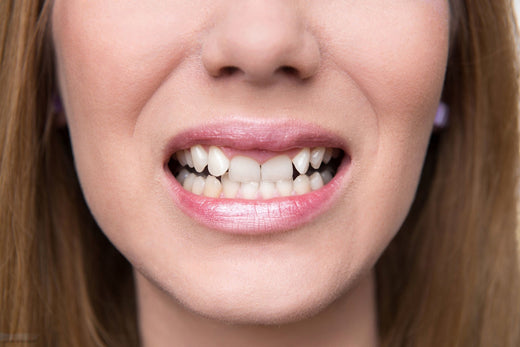How Clear Aligners Correct Overbites: A Step-by-Step Process

Overbites, a common dental issue, occur when the upper teeth overlap significantly with the lower teeth. While traditional braces have long been the go-to solution, clear aligners have emerged as a discreet, innovative, and effective alternative. These aligners combine advanced technology with patient-friendly features to provide a seamless experience. Here’s an expanded, detailed step-by-step guide on how clear aligners work to correct overbites.
Step 1: Initial Consultation and Assessment
The journey to a healthier smile begins with a comprehensive consultation with an orthodontist or dentist. This crucial stage includes:
-
Examination: A thorough evaluation of your teeth alignment is conducted using cutting-edge tools like digital scans, X-rays, and high-resolution photographs. These diagnostic tools provide a complete picture of your dental structure.
-
Diagnosis: The orthodontist assesses the severity and nature of your overbite. Based on this, they determine whether clear aligners are the best solution for your specific needs, considering factors like age, oral health, and treatment goals.
-
Treatment Planning: Utilizing advanced 3D imaging software, a customized treatment plan is developed. This plan visually maps the movement of each tooth throughout the treatment, allowing you to see a virtual preview of your post-treatment smile. The precision of this planning ensures predictable and accurate results.
Step 2: Custom Aligners Fabrication
Once the treatment plan is finalized, the next step is creating the aligners:
-
Aligners Creation: Using your 3D scans, a series of aligners are crafted from BPA-free, medical-grade plastic. Each aligner is engineered to exert controlled force, gradually shifting your teeth closer to their ideal positions.
-
Fit Check: During your first fitting, the orthodontist ensures that the aligners fit snugly and comfortably. This step is critical to kickstart the realignment process and address any immediate concerns.
-
Instructions: Patients are educated on how to wear, clean, and care for the aligners to ensure maximum effectiveness.
Step 3: Progressive Teeth Movement
The core of the treatment lies in the gradual movement of your teeth:
-
Wearing the Aligners: Aligners are worn 20-22 hours daily, ensuring constant but gentle pressure on your teeth. Patients typically switch to a new set of aligners every 1-2 weeks as prescribed by the orthodontist.
-
Gradual Adjustments: Overbite correction involves precise movements of the teeth. For severe cases, the treatment may require coordinated adjustments of both the upper and lower jaws. This ensures the bite is realigned effectively.
-
Monitoring Progress: Regular appointments, often every 6-8 weeks, allow the orthodontist to track progress, make any necessary adjustments, and ensure that treatment stays on schedule.
Step 4: Bite Correction Techniques
Clear aligners use innovative methods to address overbites effectively:
-
Precision Attachments: These small, tooth-colored bumps are temporarily bonded to specific teeth. They act as anchor points, enhancing the aligner’s grip and directing pressure to achieve desired movements.
-
Elastics (Rubber Bands): In some cases, tiny rubber bands are used with the aligners to help correct jaw alignment. They work by gently pulling the upper and lower jaws into the correct position.
-
Bite Ramps: Built-in features in some aligners, bite ramps guide the lower jaw forward, addressing deep bites and improving overall alignment.
-
Auxiliary Appliances: For complex cases, additional devices may be used alongside aligners to optimize results.
Step 5: Final Stages of Treatment
As the treatment approaches its conclusion:
-
Refinement Aligners: Additional aligners may be crafted to address minor discrepancies and achieve perfect alignment. This step ensures that every tooth is in its ideal position.
-
Verification: Advanced scans and physical examinations confirm that the bite has been corrected and the teeth are aligned harmoniously.
Step 6: Retention Phase
The final and ongoing phase of the treatment focuses on maintaining the results:
-
Retainers: Customized retainers are provided to prevent teeth from shifting back to their original positions. Patients are advised on how often to wear retainers for long-term stability.
-
Regular Follow-Ups: Periodic check-ups ensure the bite remains stable and the retainer fits well. This ongoing care helps preserve the results for a lifetime.
Advantages of Clear Aligners for Overbite Correction
Clear aligners offer numerous benefits beyond just their aesthetic appeal:
-
Discreet Appearance: The nearly invisible design allows patients to undergo treatment without feeling self-conscious, making it an excellent option for adults and teenagers.
-
Comfort and Safety: Unlike traditional braces, aligners are smooth and do not cause irritation to the gums or cheeks.
-
Removability: Aligners can be easily removed for eating, drinking, brushing, and flossing, promoting better oral hygiene during treatment.
-
Efficiency: Leveraging advanced technology, aligners offer precise movements and predictable outcomes, often shortening the treatment timeline compared to traditional methods.
-
Custom Fit: Each aligner is tailored to the patient’s unique dental structure, ensuring a comfortable and effective fit.
Conclusion
Clear aligners represent a revolutionary approach to correcting overbites. By offering a combination of precision, comfort, and aesthetic appeal, they cater to the modern patient’s needs. Through close collaboration with an orthodontist and adherence to the treatment plan, patients can achieve not only a beautifully aligned smile but also improved oral health. If you’re considering clear aligners, schedule a consultation today to take the first step toward a confident, healthier smile.

 AU
AU







